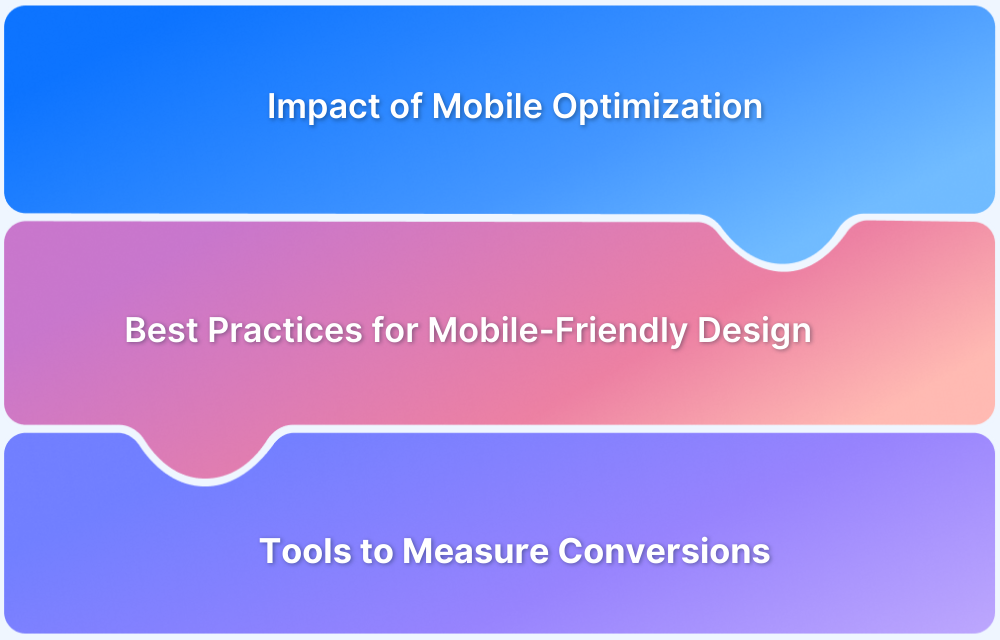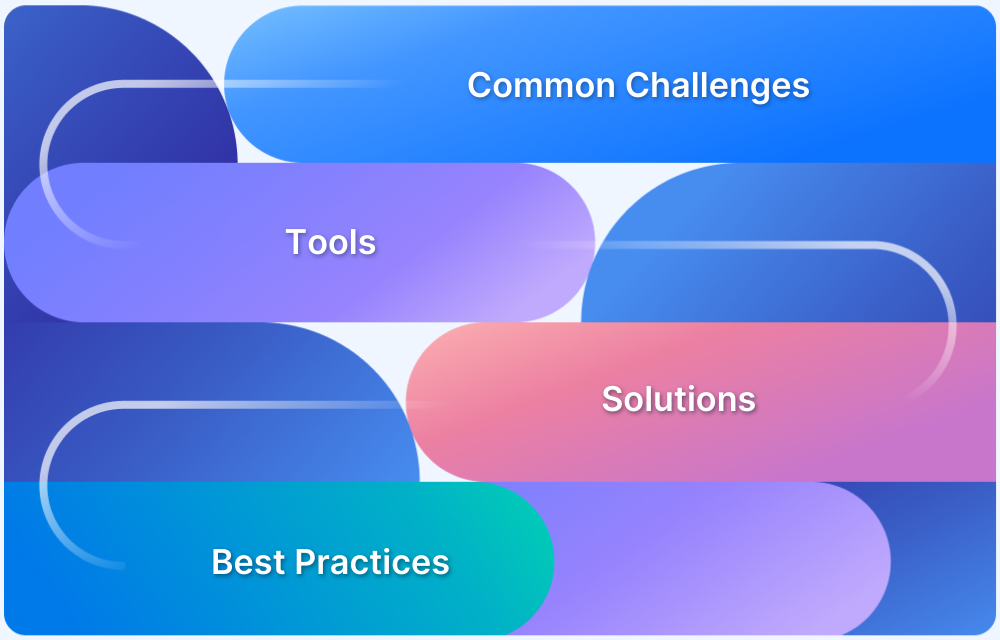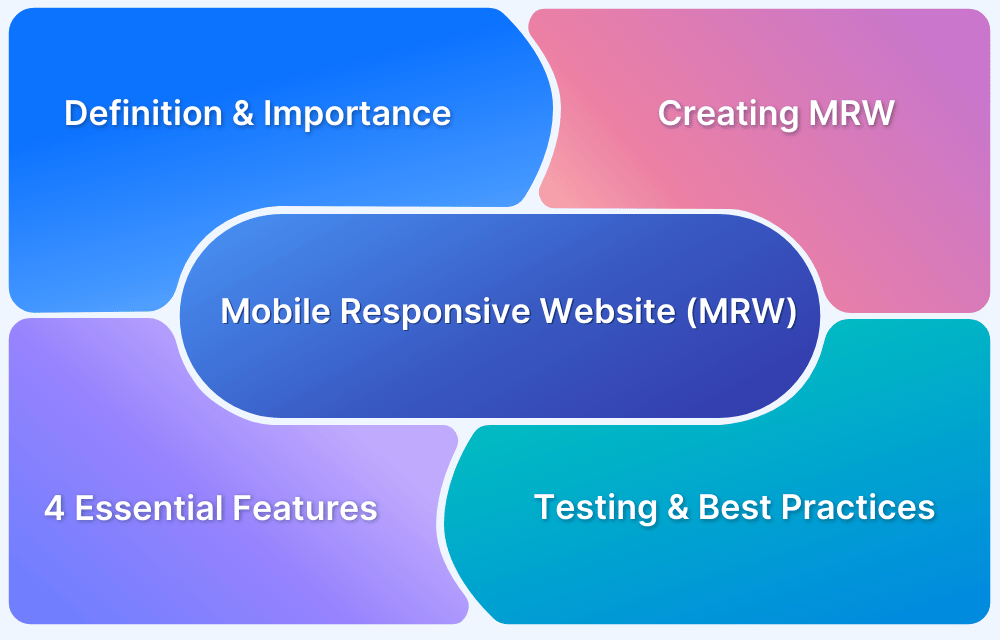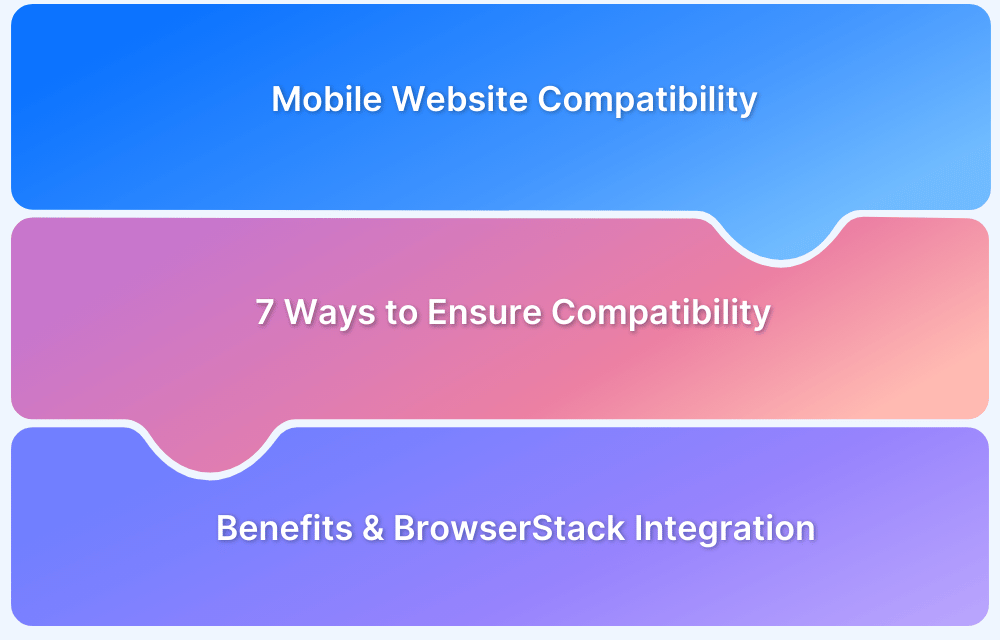So, what’s the state of mobile + internet usage in 2023? As per Internet Traffic from Mobile Devices (June 2023),
- 55% of website traffic comes from mobile devices.
- 9 in 10 (92.3%) internet users access the internet using a mobile phone.
Mobile devices have become as essential to modern humans as public transport or morning coffee (especially for overworked folks). Consequently, no matter what industry you’re in or what product you’re selling, you need to optimize your digital assets (websites, apps) for mobile devices.
Overview
What is Mobile Optimization?
- Aligning websites/apps for mobile devices so they work seamlessly on any screen, OS, or browser.
- Example: Amazon works flawlessly on laptops, Androids, iPhones, and tablets — thanks to mobile optimization.
Key Elements of Mobile Optimization
- Responsive Web Design → Content adapts to any screen size/orientation. Use tools like BrowserStack’s responsive checker.
- Mobile-Friendly Navigation → Simplify with hamburger menus, highlight key links, cut clutter.
- Performance Optimization → Users bounce if load >3s. Compress files, cache pages, avoid heavy scripts, use AMPs.
- Content Optimization → Short, scannable, mobile-sized text + CTAs in swipe-friendly zones. Ditch pop-ups.
Benefits of Mobile Optimization
- Improved UX → Faster loads, smoother navigation, better engagement.
- Traffic & SEO → Google boosts mobile-friendly sites → more visibility + revenue.
- Competitive Advantage → Mobile-first design = credibility, loyalty, and repeat users.
Key Mobile Optimization Techniques
- Mobile-First Design → Prioritize essentials, intuitive navigation, compressed assets, no pop-ups.
- Real Device Testing → Essential for tackling device fragmentation. Manual + automated testing, parallel runs, Safari DevTools, debug logs.
- PWAs (Progressive Web Apps) → Hybrid apps that work offline, send push notifications, save space, bypass app stores, and thrive even on low bandwidth.
This guide explains some serious mobile optimization.
What is Mobile Optimization?
You may have experienced the stress and annoyance that comes with trying to use a badly designed mobile website. Waiting for it to load as it buffers for ages, then dealing with very small buttons that are impossible to click, and then having to pinch and scroll to read the tiny illegible font. Having to use a badly designed mobile website or web app can be one of the most frustrating experiences.
This is why most web applications that need to cater to customers of any kind need to carry out mobile optimization.
Mobile optimization is also a synonym for Mobile SEO, this is the practice of designing web pages with content that will help the website rank high in search engine results. This optimization process drives more users toward the website in question and thus leads to higher conversions.
The purpose of mobile optimization is to modify and redesign a website or web application in order to improve the user’s experience who is using it from a mobile device. This process can involve implementing a more responsive design, using fewer pop-ups, and using AMP. In order to create a personalized user experience and boost conversions, mobile optimization is crucial.
Why is it Important to Optimize for Mobile?
Google is one of the most used search engines in the world, and as more and more people primarily use their mobile phones to browse and search the internet, it developed the concept of mobile-first indexing.
The premise behind mobile-first indexing is that Google will crawl the mobile website instead of the desktop version and determine a ranking based on this mobile version of the website. As of 2022, Google predominantly ranks websites based on this indexing method. Additionally, Mobile-first indexing is now enabled by default for all new websites (new to the web or previously unknown to Google Search).
Read More: How to ensure mobile website compatibility
This means that an optimized website will rank higher on Google’s indexing method. Therefore its imperative for all developers to ensure that the website has mobile optimizations to make it more likely to be higher up in Google’s search rankings.
However, ranking high in the mobile-first indexing method is not the only benefit of mobile optimization. As a greater proportion of users browse on their mobile phones, a mobile-responsive website can be highly lucrative. Mobile optimization involves an improved user experience, more readable content, better navigation, and a more attractive webpage for mobile websites. All of these features can increase traffic and bring about a profitable ROI.
How to Improve Mobile Optimization?
Listed below are eight tactics that can help improve the mobile optimization of your website.
- Create a Responsive Web-Design
- Focus on CTAs.
- Create a simple design
- Compress Images
- Use popups the right way
- Use Videos or Gifs.
- Use Accelerated mobile pages (Google AMP)
- Design the website for easy navigation.
Let us look at each of them in detail.
- Create a Responsive Design: The website should take into consideration the readability, the images and buttons, loading times, and different views available on mobile phones. This means that the developers should customize content in order to recreate the desktop experience on the mobile phone’s screen.
Mobile responsiveness can be tested using the Interactive testing tool available on Browserstack. This tool helps users test the responsiveness of their mobile website across different devices, screen orientations, screen sizes, and configurations.
Try BrowserStack’s Responsive Checker
- Focus on CTAs: For the purpose of optimizing mobile conversions, there needs to be an emphasis on call to actions. Without the privilege of a keyboard and mouse, it can be difficult to hover and click on the information. For this purpose, its vital to emphasize call-to-action buttons such as “Buy Now” or “Talk to Us” with color, font, and size.
Read More: 13 CTA Design Examples to Boost Conversions
- Create a simple design: Compared to desktop devices, phones have a smaller screen, and attempting to simply compress the format of a desktop website inevitably leads to a hodgepodge of misaligned elements.
To avoid losing users, it’s important for the developers to simplify the desktop website, streamlining it to retain only the most important elements. For example, sidebars and pop-ups are both features that don’t belong on mobile websites. Sidebars end up creating a large page where the user has to zoom in to see any elements. Popups are similarly disruptive and often distracting. Ad Popups often divert user attention and lead to fewer conversions. Therefore its best to avoid such elements in mobile websites.
In order to ensure that all visual elements are correctly placed and not disrupted, visual testing tools such as Percy can be employed. Percy can be used with several automation frameworks such as Cypress, Selenium, and Appium to carry out visual testing of mobile websites across mobile browsers and real mobile devices.
Compress Images: Images with large file sizes can significantly increase the load time for a website. It would be prudent to upload smaller or maybe even different images that better suit the mobile website.
Compressing images doesn’t mean sacrificing their quality to the point that the image is difficult to understand. A fine line needs to be struck between being visible enough that the user can clearly view the infographic or product and yet small enough to reduce the load time.
Read More: How to make images responsive
- Use popups the right way: On a website, popups help to catch the user’s attention and convert the user into a customer through advertisements or other means. However, on a mobile, popups can be annoying, difficult to close, and actually counter intuitive.
This is not to say that popups can’t be used at all. When made to take up the whole screen and designed specifically for a small screen, popups can have the exact same effects as they do on desktop devices and lead to more conversions.
- Use Videos or Gifs: Images can be rather difficult to format and don’t always communicate as desired. Additionally, images can end up taking up far too much space, even when put in a carousel. Therefore using videos and gifs can often make a website more aesthetically pleasing while still showcasing the desired products or message that the website needs to convey.
- Use Accelerated mobile pages (Google AMP): By dramatically minimizing and optimizing the elements required for webpages, Google AMP achieves quicker loading times. This helps reduce bounce rates and makes it more likely for users to stick around.
Regardless of the technology used to create a website, Google Search holds all pages to the same standards; but while AMP itself isn’t a ranking factor, speed is. Therefore using AMP also serves to improve search ranking for the web application in question.
- Design the website for easy navigation: Navigation of a web application is very different on phones. Tapping is the way that a mobile user communicates with a mobile website. Developers should keep this in mind and focus more on creating tappable elements that can be directly manipulated. Mobile users generally want to interact with elements directly rather than find and click on typical navigation buttons.
How can Mobile Optimization Improve Website Conversions?
Website conversions are essentially a measure to understand the number of users who completed the action for which the website was designed, be it signing up for regular blog updates, buying an item, or booking a meeting. To increase website conversions, it only makes sense to optimize the mobile website.
Read More: How to create an ultimate mobile experience
There are more mobile users than desktop users today, to attract user attention and get it to stay, it is vital to make a mobile website that is simple, minimal, and realistic. Websites should aim to remove any deterrents and create streamlined checkout processes, easy-to-navigate webpages, and load fast to retain consumer attention.
All of these fall under mobile optimization, and optimizing a website can greatly improve conversions by reducing friction. Mobile optimization prioritizes the user’s needs and makes a website that is engaging, easy to use, and driven towards a certain goal.
When releasing a web application or website many developers may neglect the fact that it could be accessed from a mobile. Testing the desktop version extensively prior to launch and neglecting the mobile version can have serious consequences and alienate a large demographic of users from the website. In order to increase conversions it’s imperative to check mobile optimization across your website.
The wide variety of browsers, operating systems, and devices makes web development incredibly difficult. If even one OS, device, and browser combination is incompatible with the web application, a sizeable portion of the consumer market and the associated revenue are lost. Early and continual testing is essential to ensure that the application being created has adequate device coverage. You can use tools like BrowserStack to keep up with the dozens of device/OS combinations introduced each year.
To conduct thorough testing across 3500+ browsers and real mobile devices, you can use BrowserStack’s Real Device Cloud. Specialized tests which take real user conditions into account can be created with Browserstack, allowing developers to optimize their websites for mobile users.







